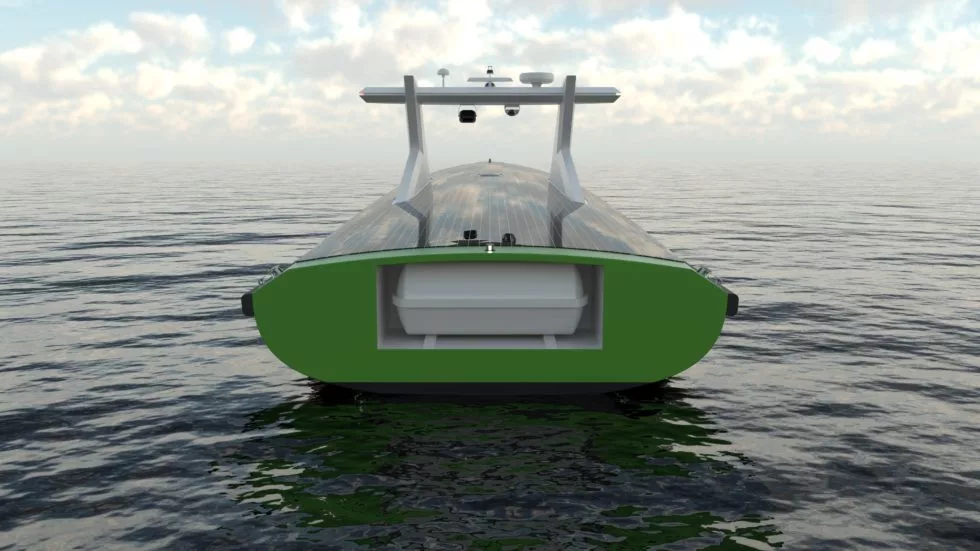Although offshore structures such as wind turbines do need to be protected, crews of guard boats can get bored just waiting around to chase off intruders – plus, of course, they have to be paid a salary. It was with this in mind that the Autonomous Guard Vessel (AGV) was recently conceived.
The AGV concept is the result of a collaboration between four Dutch groups – C-Job Naval Architects, Seazip Offshore Service, the Maritime Research Institute Netherlands, and eL-Tec Elektrotechnologie – along with US-based Sea Machines. That collaboration was managed through the LISA Community, which connects professionals working in the maritime industry.
The un-crewed vessel itself would be electrically-powered, periodically returning to an onsite charging station to top up its batteries. Since it wouldn't require any crew quarters, the AGV would be considerably smaller and lighter than existing guard boats, thus using less energy. That said, it would also feature an array of solar panels on its deck, to help keep its essential functions running if its batteries got low.
In order to ensure that the structure in question was guarded at all times, plans call for multiple AGVs to be assigned to each location. That way, even if one boat was moored up and recharging, another one would be out patrolling.

The vessels would detect and identify potential intruding craft via a combination of optical cameras, radar, and the existing maritime automatic identification system (AIS) – the latter is an automatic tracking system that incorporates transponders which transmit data such as speed and heading from ships.
If one of those vessels were getting too close, the AGV would send it a verbal warning via radio, and then proceed to come alongside and physically escort it out of the area. Should that craft not comply, the AGV's video system would record the incident for subsequent prosecution. Additionally, if need be, the AGV could alert staff at a shore- or mother ship-based command center, who could take over and remotely control it in real time.
"The group set out to improve upon the overall process of securing an offshore area while incorporating sustainable solutions and reducing overall cost," says Pelle de Jong, founding partner of LISA. "By utilizing the knowledge we have as a group as well as the technology already available, we succeeded in creating a design which does this and more."
Source: C-Job Naval Architects





